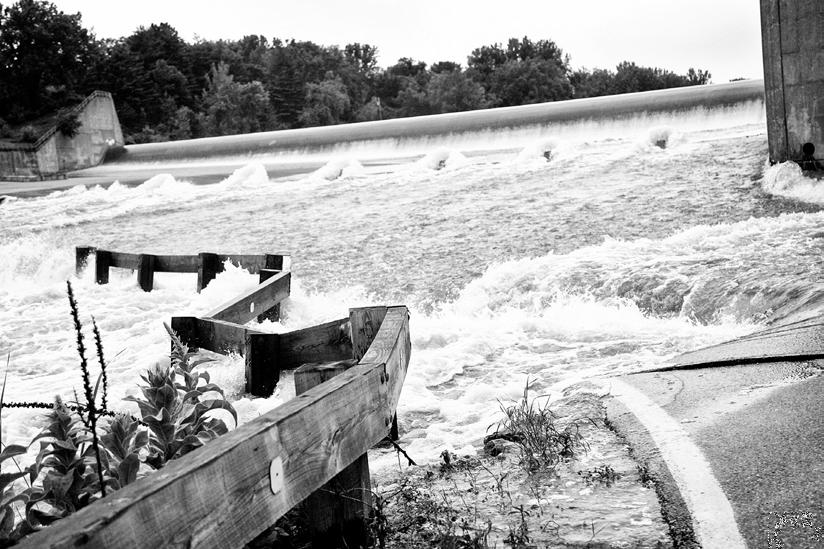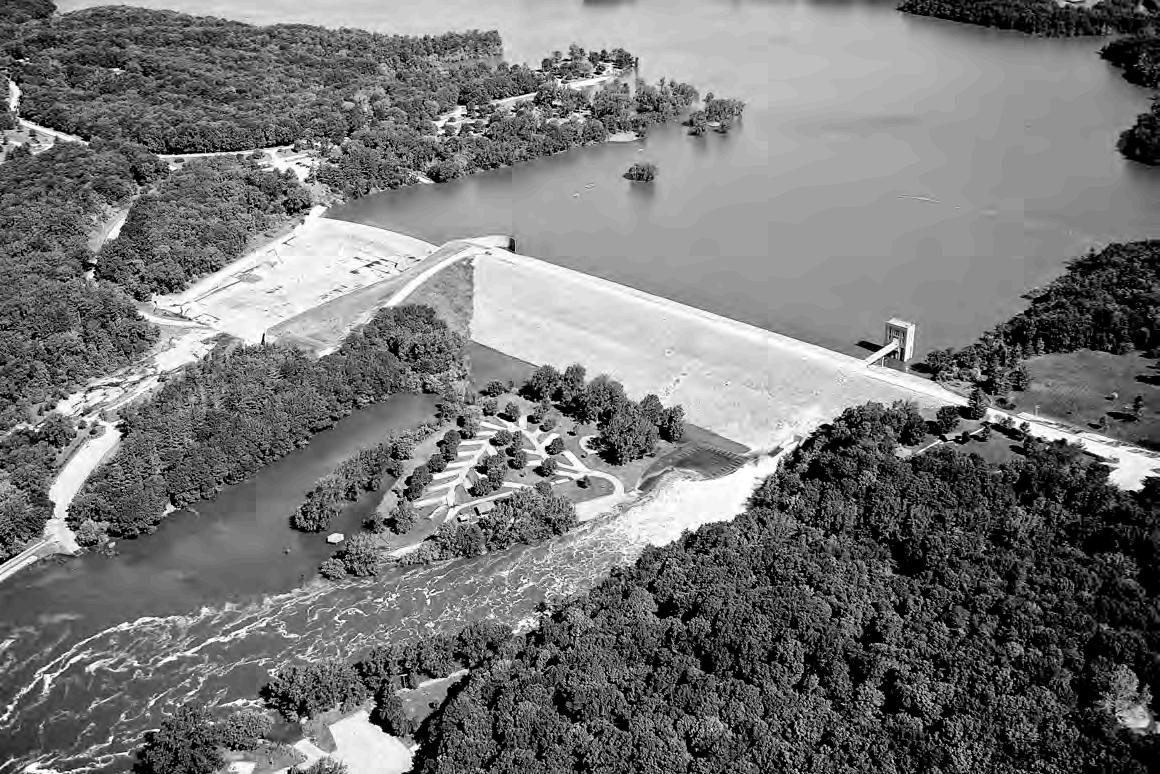
5 minute read
15 years since devastation — recovery, reconstruction, and advancements
Since the Iowa floods of 2008, reconstruction and recovery efforts continue despite this year marking its 15 anniversary.
Parker Jones
Advertisement
Alejandro Rojas
Summer Editors
The 2008 flood was a devastating event to Iowa City and the University of Iowa campus. Over 20 campus buildings were damaged, with several needing complete demolishment, and others needing millions of dollars worth of repairs.
In the years since the destruction, the city, the UI, and the state as a whole have made vast discoveries and advancements toward flood mitigation.
Larry Weber, director of the Hydroscience and Engineering program at the Iowa Institute of Hydroscience and Engineering, witnessed both the Iowa floods of 2008, and those in 1993. He highlighted the disbelief felt by locals when faced with another major flood just 15 years later.
“In ‘93, folks felt like it was a flood of a lifetime. Nobody thought they would see anything like it again,” Weber said.
Just prior to the 2008 flood, Weber said, a series of intense rainfall events in northern Iowa triggered a chain reaction that resulted in unprecedented floods downstream. As narrow bands of rainfall moved toward Iowa City, flood waves grew in intensity, leading to large-scale impacts on Iowa City, Cedar Rapids, and other communities in eastern Iowa.
Weber also recalled the peculiar weather conditions during the flood itself.
“What was a little odd is that in Iowa City, you know, the weather was pretty nice,” Weber said. “It was mostly blue skies and very little rain.”
When asked about the immediate impacts on Iowa City, Weber highlighted the enforced curfew along the Iowa River, which stated that no one was allowed or expected to be along the Iowa River except for emergency services and other professionals. The curfew was in conjunction with the evacuation of numerous academic buildings, including the laboratory building, the main library, the theater arts building, and the old art museum building.
The aftermath of the floods brought about a sense of desolation and darkness to the campus, Weber said, noting the resulting power outage and city-wide silence.

“It was a very eerie feeling ... a vibrant campus community suddenly became an area that was very quiet, and it was eerily quiet,” Weber said.
Recovery efforts commenced as the waters receded, but the journey to restore Iowa City was arduous, Weber said. He noted that although the original timespan given was around 10 years, recovery has taken even longer as the opening of the Stanley Museum of Art only occurred in August 2022.
“It seemed impossible that it could take 10 years. And yet, you know, the reality of the full recovery of the university campus was, in fact, 10 years, and even longer,” he revealed.
The floods of 2008 not only left a lasting physical impact but also transformed the
Continued from 3 mindset of the community, Weber said. He emphasized the shift in perspective regarding floods, noting that Iowa City has since adopted a different approach to engaging with the river, recognizing it as a key asset that runs through the campus.
“The floods need to be part of our campus community planning and our inner-city community planning,” he said.
One such planning element born after the flood was the creation of the Iowa Flood Center in 2009. The center has played a crucial role in raising water-related literacy in Iowa for civilians, Weber said.

“We’ve really helped to raise the water literacy of the state, understanding things like the ‘hundred-year flood’ and why it happens more than every hundred years,” he said.
The Iowa Flood Center’s accomplishments are numerous, from deploying sensors across the state to monitor rivers and streams, providing valuable information to communities, to creating the free, web-based Iowa River Flood Information System. This system offers easy access to flood-related data, aiding individuals, homeowners, businesses, emergency services, and city administrators in their flood preparedness efforts.
In addition to the Iowa Flood Center itself, the City of Iowa City has made its own flood mitigation efforts, including property buyouts, city code updates, and infrastructure improvements. One notable improvement was the $40 million project to raise Dubuque Street, completed in 2018, which Weber said was critical to future flood management. Most recently, the city put nearly $300,000 toward a floodplain property buyout in April.
Witold Krajewski is a professor of civil and environmental engineering at the UI, and the director of the Iowa Flood Center. Like Weber, Krajewski saw the 2008 floods firsthand and said he still has vivid memories of the event.
“I remember I was at Princeton University attending some Ph.D. defense there, and I came back home and walked into the [Iowa Institute of Hydroscience and Engineering] and I saw our secretary carrying sandbags, and that was a bit of a shock,” he said. “It was a scramble, and a couple of days later, we had to evacuate our building.”
A few weeks after the flooding occurred, Krajewski said he and Weber were directed by then UI President Sally Mason to contact the director of the National Science Foundation, Arden L. Bement, Jr. Krajewski and Weber gave Bement a tour of the area, and even took him to a levee in Cedar Rapids.
“We were standing on the levee, and the guy was like six feet tall, and he asked ‘So how high was the water?’ and [our guide] asked him how tall he was and said, ‘Okay, six feet over your head,’” Krajewski said. “He was a former general who worked during the Katrina disaster in New Orleans, and he worked at that time for the U.S. Army Corps of Engineers, and when he looked around, he said this is at the same level as Katrina back in 2006.”
Around the same time, a group of scientists from the National Science Foundation also visited, bringing with them equipment to begin measuring the flood.
After working with the team, Krajewski said he and Weber were approached by some leaders of the state that asked the pair to create a proposal for the upcoming legislative session.
It was during this time that the Iowa Flood Center was established, which Krajewski was appointed to lead. In the 15 years since, the center has been at work on flood research not only in the state of Iowa, but across the U.S.
This includes the new Center for Hydrological Development which the UI announced in February. The center is the result of a partnership between the UI and the University of Alabama, with the center to be housed at the Alabama Water Institute.
Outside of the UI, the flood’s effects could be felt by the rest of the Iowa City community. One man familiar with this is Troy Kelsay, University Heights’ chief of police.
In 2008, Kelsay was a police officer in the Iowa City Police Department, and was involved in the efforts to fight the flood and help civilians with the rest of department. He said the floods were surreal due to the fact that it wasn’t the direct result of heavy rain, but instead from water coming from upstream.
“There wasn’t thunder and lightning, there wasn’t a lot of noise, there wasn’t something ominous like that happening. It was just this slow and steady rise of water, and it kept getting higher






